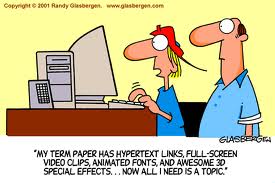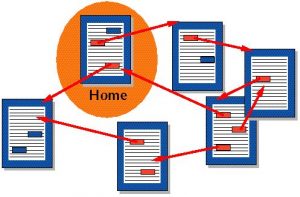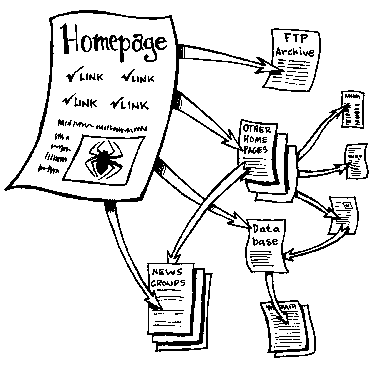I was first introduced to hypertext when scrolling through countless Wikipedia sites (of course), one after another until giving up because the topic was no longer interesting. However, I also remember coming across hypertext in a book I was reading in middle school. I was reading Fearless by Francine Pascal, my favorite book to this day, on my Nook when suddenly I came across a highlighted word. When clicked, the link brought me to the end where the footnotes were located. On my E-reader, the footnotes were not at the bottom of the page, but were instead at the back of the book, accessible by a hyperlink.

I agree with Sarah when she mentioned in her post that, “…being able to connect ideas and follow various trains of thought is very useful especially when it comes to research.” I agree, as going back to my wikipedia example, that hyperlinks can provide many users/readers with additional information to further what they were looking for. Hypertext changes the way a text is read in this way, changing it from a linear text to a non-linear text with just a blue line and a link. As Christian Vandendorpe mentions in Reading on Screen: The New Media Sphere,”Hypertext is a way of linking any portion of a document to another one” and says that “hypertext links give an incredible lightness to the reader, who ca easily jump from one idea to another one, shifting contexts as easily as in a conversation” (Vandendorpe).

For the most part, I believe hypertext is exclusive to digital writing. However, though I also noticed in Too Dimensional: Literary and Technical Images of Potentiality in the History of Hypertext by Belinda Barnet and Darren Tofts that it mentions that “unlike writing on paper, the link would consequently allow for a natural sequence of ideas” (Barnet), I feel as though this can be achieved in print through different directions, footnotes, and ideas. It may not be an actual link, but I feel as though the concept applies, though I may be completely wrong…
I believe the benefits of hypertext are that it allows for a nonlinear style of writing that provides the reader with more information than is what’s on the page. However, I think the drawbacks of hypertext coincide with the benefits, as sometimes too many links can be overwhelming, and sometimes a linear read is what someone wants/is looking for.
When reading texts for class I often highlight in different colors to mark different things. For example, I use yellow as the typical “important information” color, but I also use pink to mark sentences I like or want to remember. Some that I marked, and therefore found interesting in these readings, are: “For the average reader, a book was seen not just as a collection of pages bound together, but as an organic whole worth read from cover to cover” (Vandendorpe), and “Information should not be organized Alphabetically or numerically, it should be organized by association – this is how the mind works” (Barnet). I think it’s cool how the readings connect these ideas to hypertext and therefore make the text itself more enjoyable for the reader.
Word Count: 528
Works Cited:
